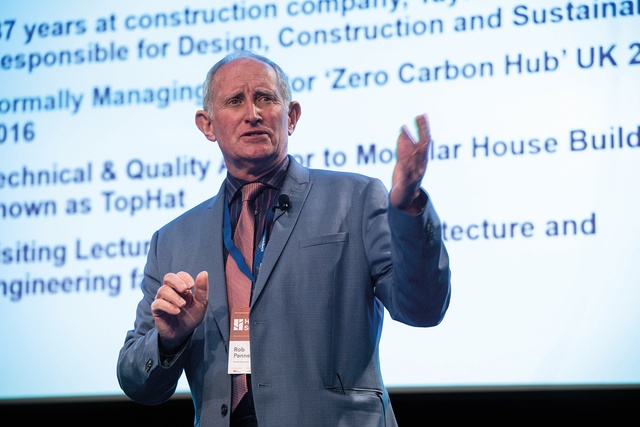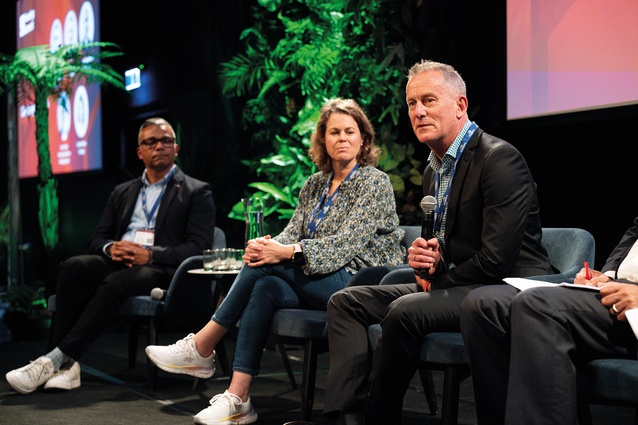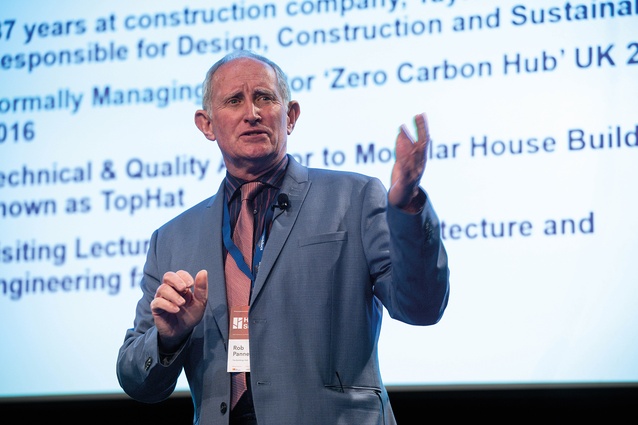Not strong enough
Annabelle Smith gains insight into the challenges ahead for sustainable construction at the 2024 Housing Summit.
Inadequacies embedded in building code and consent regulations present significant barriers to advancing the rate of providing quality and sustainable housing.
This was one of the key themes to emerge from this year’s Housing Summit convened by the New Zealand Green Building Council (NZGBC), where 21 industry and thought leaders came together to confront the pressing challenges hindering the development of sustainable, low-carbon, high-quality homes in Aotearoa.
For me, a student and aspiring architect, the Summit unveiled insights into the complex obstacles confronting the sector. Fundamental concerns included regulatory deficiencies and educational gaps: issues which are root causes of subsequent challenges impeding the construction of sustainable housing.

Current regulatory minimums fail to assure liveability, with quality and sustainability set as targets, not as standards. Designing for quality and sustainability through resilience and longevity is imperative, given that 80 per cent of buildings we construct today will be in use in 2100. Moreover, with the increased frequency and severity of climate events, ensuring homes are designed to be resilient to climate change is critical.
Economist Shamubeel Eaqub expressed major concerns surrounding Aotearoa’s significantly outdated building code; these were echoed by the Minister for Building and Construction, Chris Penk, who addressed the current code’s lack of aspiration and innovation. Concerns were also raised about carbon-accounting regulation and the need for transparency in emissions measurement if we intend to be Carbon Zero by 2050. Eaqub and MBIE’s Antonia Reid agreed that the duration and inconsistency of the building consent process impedes the rate at which our sub-par homes are being built. The building consent system is not streamlined across councils and this contributes to inconsistencies, time delays and costs.
Simultaneously, an absence of education perpetuates misconceptions that interfere with the widespread adoption of sustainable housing practice, thus inflating costs. Absence of education is evident, from professional resistance to adopting the modelling method in the building code, which diminishes the optimisation of financial resources and passive design, to consumers’ ignorance about the longterm cost, and health and well-being benefits of high-performance, sustainable homes. By way of support, Sam Brown, of Arête Architects, addressed the misunderstanding amongst consumers that sustainability requires aesthetic compromise. Ankit Sharma, of Registered Master Builders, stated that 55 per cent of home-owners don’t want to pay a premium for passive, sustainable homes; this statistic exemplifies the ways in which education drives demand, and complex demand and affordability dynamics compound regulatory complications.
Recognising the critical role of housing in solving prominent social and environmental issues, Stephanie Spicer, Head of Sustainability at Oceania, emphasised that the cost of inaction will be significant. Standardisation emerged as a fundamental strategy for enhancing the quality and frequency of new homes. Introducing variations of high-performance, sustainable modular housing offers consumers choice around aesthetics, site suitability and climate adaptation, as exemplified by Arête Architects’ SIPtris system, which comprises bespoke and identical mass housing. Prefabrication of modular components minimises waste, embodied carbon and design obstacles, thus improving sustainability while decreasing cost and time.
Early integration of frameworks, like NZGBC’s Homestar, ensures sustainable homes of superior quality to building code standards. “Design it right, build it right, operate it right” – BRANZ’s Chris Litten underscored the significance of education at project level through to consumers, with standardised highperformance housing serving as an educational blueprint.

To catalyse widespread change, it is imperative to educate consumers as a sector and lead by example. Education will drive standardisation and create demand, which, in turn, will reduce cost. This has been the case in the UK where construction costs have not increased with sustainable practice, as underlined by Rob Pannell of The Building Hub, UK. This is a reality possible for Aotearoa, if education is harnessed to stimulate the widespread drive required and the government sets ambition.
Incentivising councils and communities to reframe low-carbon housing growth as an opportunity is critical. This involves supporting initiatives that prioritise quality, like Build-to-Rent models, and optimise sustainability through modulation of high-performance housing to reduce waste, time and cost. Finally, engaging university students in industry conversation and critical regulatory reviews will spearhead necessary transformations as we work towards a sustainable future. Bridging the gap between professionals and students provides access to fresh, innovative perspectives, crucial for propelling us towards a more efficient and responsible sector.















